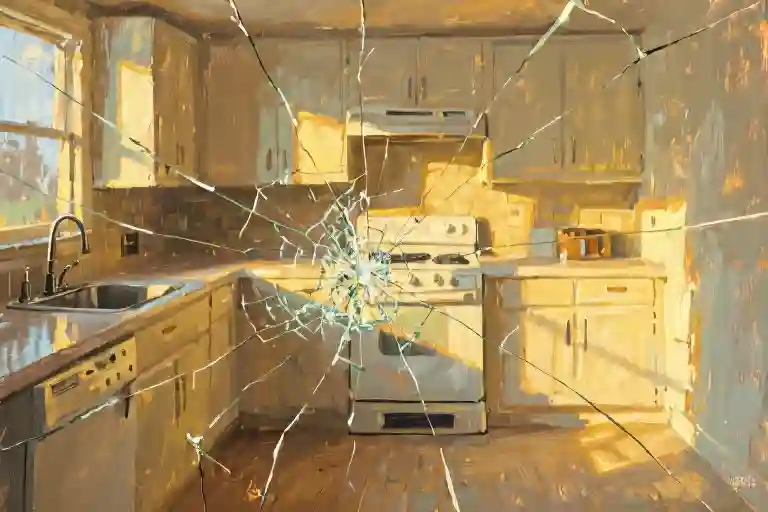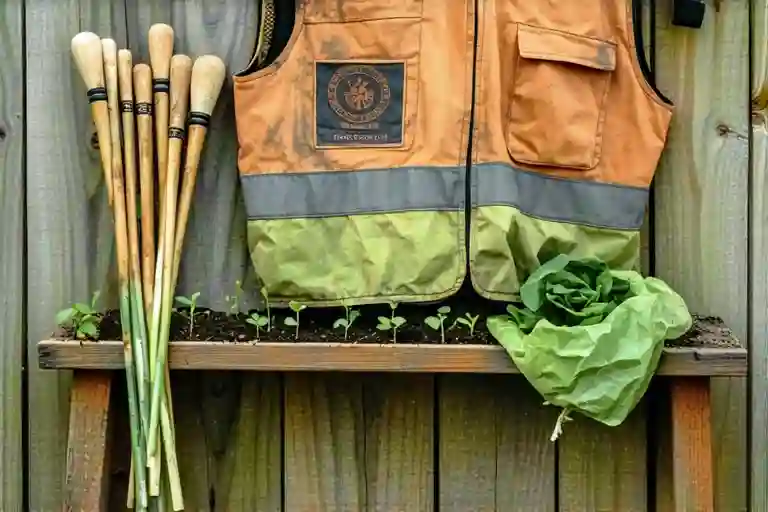The plane fell from the sky like grief with wings, a metallic bird surrendering to gravity. News anchors used words like ‘tragedy’ and ‘heartbreak’ for exactly three days before the world moved on to fresher pain. But some falls leave no black boxes to analyze, no debris fields to map. The wreckage scatters invisibly across nervous systems and bed sheets.
She said it quietly that night, fingers tracing the edge of a wine glass: “Let’s be nothing. I heard it lasts forever.” Not the petulant nothing of teenage rebellion, not the performative nothing of poets chasing metaphors. This was the nothing of survivors cataloging their exits – the kind that happens when you’ve buried too many versions of yourself in the shallow graves of other people’s promises.
What do you call love after you’ve seen its teeth? After you’ve memorized the particular shade of blue your fingertips turn when someone forgets to hold them? We name things to tame them, to pretend we have some say in when they leave. But names become tombstones. ‘Partner’ cracks under the weight of unreturned calls. ‘Lover’ curdles in the mouth when the body remembers collisions no apology can undo.
The flight recorder would show this: a man who said “I didn’t mean to hurt you” while his hands were still warm from impact. A woman learning that forgiveness is just grief wearing a different coat. The way silence becomes its own language when all other words have been weaponized.
Somewhere over the Atlantic, 240 souls learned how quickly the body becomes memory. Somewhere in a suburban kitchen, a man who told his daughter she was too sensitive is microwaving leftovers. The math never works out – we mourn in headlines but heal in footnotes. Maybe that’s why nothing starts to sound like sanctuary. Not an absence, but a ceasefire. Not emptiness, but the one shape that can’t be shattered when dropped.
When the Body Keeps Its Own Ledger
The glass shards catch the afternoon light as you sweep them up, each fragment mapping the trajectory of that last collision. Your fingers know better than to press too hard against the edges, just as your shoulders remember to hunch slightly when passing that particular corner of the kitchen. Trauma writes its memoirs in our musculature long before the mind dares compile its anthology.
Neuroscience confirms what survivors already know – the body keeps score with brutal accuracy. Bessel van der Kolk’s research reveals how trauma bypasses language centers, etching itself directly into our nervous system. That phantom ache in your ribs when you hear a certain laugh isn’t imagination; it’s cellular recollection. The way your stomach knots at the scent of his cologne isn’t hypersensitivity – it’s your limbic system maintaining perfect records of every betrayal.
“I didn’t mean to hurt you” drifts through the apartment like cigarette smoke long after the ashtray’s been emptied. Your hands continue wiping down counters that stopped being dirty hours ago. There’s a particular violence in how ordinary objects become crime scenes – the coffee mug he left behind now a museum exhibit of false intimacy, the bed sheets transformed into forensic evidence of love’s decomposition.
Three distinct tremors travel through your body when the memory hits: first the fingertips (7:32pm, reaching for a phone that won’t light up with his name), then the diaphragm (8:15pm, remembering how his breathing changed when lying), finally the knees (9:03pm, collapsing under the weight of all the promises he didn’t mean). The brain may rationalize, but the vertebrae never forget the exact angle at which you bent to pick up the pieces of yourself he dropped.
Somewhere between the third and fourth sweeping of the same floor tile, you realize the peculiar algebra of heartbreak: the body’s memory operates in negative integers. Each recollection deducts something fundamental from your balance – not just trust or affection, but the very capacity to believe your own senses. When skin becomes an archive of broken touch, what remains is the terrible arithmetic of survival: subtract his hands from your hips, cancel out his voice in your ears, divide your heart by the number of times “I didn’t mean to” actually meant “I’ll do it again.”
This is how we learn to translate pain into a language the body can’t unlearn. The shoulders that tense at raised voices aren’t overreacting – they’re speaking the mother tongue of self-preservation. The flinch when someone reaches out too quickly isn’t irrational – it’s the body’s margin notes in the manuscript of near misses. We become walking libraries of cautionary tales, our flesh-bound volumes whispering warnings in the braille of scars.
Perhaps this is why “nothing” begins to sound like sanctuary. Not the absence of feeling, but the absence of evidence. No more fingerprints on your spine to decode, no more emotional trigonometry calculating angles of approach. Just the clean geometry of solitude – the acute awareness that while bones heal and skin renews, some fractures propagate inward, creating fault lines only silence can stabilize.
The Arithmetic of Pain: 240 to 1
The flight recorder would later reveal the plane descended at 30,000 feet per minute – a vertical dive faster than human grief can process. In those final moments, 240 souls became statistics while their families became archivists of unfinished conversations. Yet before the evening news cycle completed its rotation, the world had already moved on to dinner plans and weather forecasts. This is how tragedy operates in modern arithmetic: collective mourning divided by attention span equals residual hashtags.
Somewhere in Tokyo, a man who told his wife her emotions were ‘meteorologically excessive’ is adjusting his tie in a mirror. His cufflinks catch the morning light as he practices sincere expressions for today’s board meeting. The muscles around his mouth have forgotten how to form the word ‘sorry.’
Somewhere in Cape Town, a father who missed every school recital is teaching his new Labrador to fetch. The dog’s joyful barks drown out his daughter’s childhood voice recordings saved in his phone – the ones marked ‘Listen Later’ three years running.
Somewhere in Chicago, a man who systematically dismantled a woman’s self-worth between breakfast meetings and midnight texts is sharing tapas with colleagues. As they toast to quarterly profits, his laughter contains no shrapnel from the emotional shrapnel he deployed in bedrooms.
This imbalance isn’t mere injustice; it’s a fundamental flaw in our neurological design. Studies on compassion fatigue reveal the human brain can only sustain acute empathy for 72 hours before seeking emotional distance. We’re wired to abandon ship when the suffering exceeds lifeboat capacity. The same survival instinct that makes us jump from burning buildings also makes us scroll past burning cities.
Yet the victims’ bodies keep different time. Nerve endings continue transmitting distress signals long after witnesses have turned away. The stomach lining remembers every swallowed insult; the shoulders carry phantom weight of apologies never received. Unlike news cycles, trauma operates on geological time – its aftershocks arriving years after the initial fracture.
Perhaps this explains the cruel mathematics: why 240 disappearances command temporary vigils while a single act of intimate violence leaves no visible crater. The former fits neatly into crisis narratives with clear villains and heroes. The latter exists in the quantum state of ‘he said/she said,’ where truth depends on the observer’s position.
The flight’s black box was recovered within weeks. Most emotional wreckage never gets such forensic attention.
The Architecture of Nothingness
There’s a certain violence in naming things. To call it ‘love’ when hands withdraw in empty rooms, to label it ‘accident’ when the collision leaves permanent fractures. That’s why nothing feels like the only honest construction left – not as surrender, but as deliberate architecture. A shelter built from the absence of false promises.
First metaphor: The blank canvas.
Every artist knows the terror of the first stroke. How commitment corrupts possibility. Nothingness here becomes the pristine gesso layer – not emptiness, but potentiality stripped of obligation. Like those Japanese ma spaces between brushstrokes that hold more meaning than the ink itself. When someone says let’s be nothing, they might be saying let’s preserve the unsaid things before we ruin them with language.
Second metaphor: The pause between notes.
John Cage’s 4’33” taught us silence isn’t absence, but a container for ambient truth. Emotional nothingness operates similarly – not indifference, but the radical act of withholding participation in expected narratives. No more performing grief for audiences who prefer tears to actual change. No more rehearsing forgiveness scripts for those who treat remorse as seasonal decor.
Third metaphor: The zero in mathematics.
Empty but essential. The placeholder that makes other values legible. This is nothingness as boundary marker: Here is where your damage stops and my selfhood begins. Unlike walls built from anger (which eventually crumble), zero-point boundaries maintain their integrity precisely through refusal to engage.
A therapist might argue: “Isn’t this just emotional avoidance?”
A poet would counter: “No more than a mute button avoids noise pollution.”
We’ve been conditioned to treat detachment as pathology, when sometimes it’s the most sane response to systems that reward attachment wounds. The real question isn’t why choose nothing, but what exactly are we preserving by refusing to name this thing? Maybe it’s the right to define experiences on our own terms, without handing the dictionary to those who’ve proven themselves poor linguists.
Your Nothing Manifesto
Complete this with any writing instrument (pencil allowed):
I choose to be _ because cannot _.
Example: I choose to be fog because fog cannot be captured in clenched fists.
Some will call this cowardice. Those are usually the people who benefit from your continued entanglement. But survival has never required justification – only the quiet certainty of knowing what you won’t endure anymore.
The Architecture of Nothingness
There’s a particular silence that follows the decision to become nothing. It’s not the silence of absence, but the quiet of a room after the last guest has left—a space where the air still hums with the imprint of what could have been. When she said “Let’s be nothing”, it wasn’t resignation; it was the careful dismantling of expectations before they could collapse under their own weight.
Nothingness, we discovered, has its own topography. It’s not an empty plane but a landscape with contours: the gentle slope of unanswered texts, the valleys where shared memories used to grow wild, the cliffs where we’d once built promises too close to the edge. To choose nothing is to become cartographers of the unmarked—drawing maps where there are no destinations, only the quiet relief of not being lost.
Somewhere between the third month of nothing and the first snowfall, I noticed how light my hands felt without the constant work of holding. No more shaping my palms into vessels for someone else’s fragile things. No more catching. The body remembers the weight of what it’s carried long after putting it down—that’s the cruel joke of muscle memory. But nothing? Nothing is weightless.
There’s an art to the un-relationship. We perfected the choreography of almost: almost touching when passing the salt, almost smiling at old jokes, almost saying each other’s names in a way that would mean something. The spaces between our almostes became the most honest thing we had.
What they don’t tell you about nothing is how fertile it can be. In the absence of labels, we grew our own language—one without verbs that meant leaving, without nouns that could break. We spoke in pauses and half-glances, sentences that dissolved before they could curdle into lies. “I didn’t mean to hurt you” became unnecessary when there was nothing left to mean.
Of course, the world outside our nothing kept its brutal arithmetic. Planes still fell. Men still laughed over lunches they didn’t earn. But in the quiet country of nothing, we were safe from the violence of verbs—no more betraying, no more leaving, just the gentle present tense of being.
Perhaps this is what survival looks like when you’ve seen too much: two people tending the empty space between them like it’s the last clean thing. Not because we didn’t believe in love anymore, but because we’d learned to believe in what comes after—the quiet, the nothing, the not-hurting.
In the comments: Tell me one word that describes your version of nothing.





